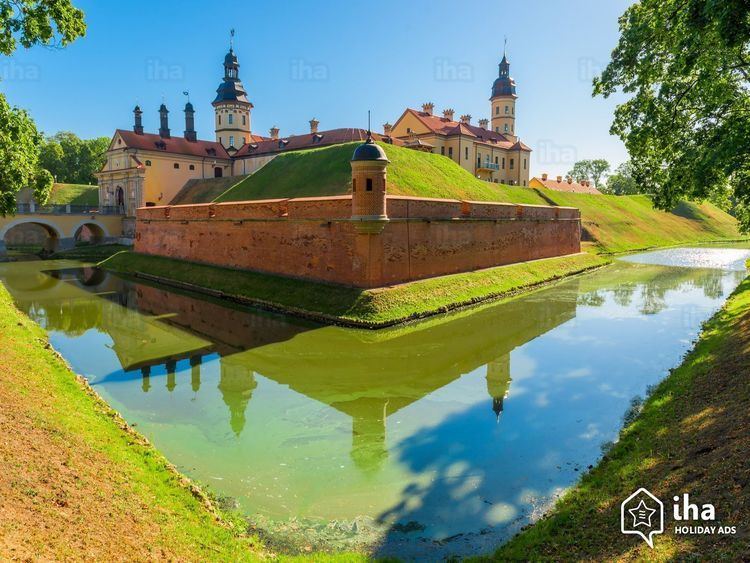Highest elevation 345 m (1,132 ft) | City raions 8 Area 39,912 km² | |
 | ||
Raions 22Cities - 22Urban localities - 20 Website www.minsk-region.gov.by Clubs and Teams HC Dinamo Minsk, FC BATE Borisov Points of interest Church of Saints Simon an, Belarusian Great Patriotic, Gorky Park, Cathedral of Saint Virgin Mary, Minsk Botanical Garden Destinations Minsk, Narachanski National Park, Lake Narach, Stańkava, Barysaw | ||
Minsk region tourism video belarus
Minsk Region or Minsk Voblasć or Minsk Oblast (Belarusian: Мі́нская во́бласць, Minskaja voblasć [ˈmʲinskaja ˈvobɫasʲtsʲ]; Russian: Минская о́бласть, Minskaja oblastj) is one of the regions of Belarus. Its administrative center is Minsk, although it is a separate administrative territorial entity of Belarus. As of 2011, the region's population is 1,411,500.
Contents
- Minsk region tourism video belarus
- Map of Minsk Region Belarus
- Chalk and marsh lakes of belarus minsk region
- Geography
- History
- Tourism
- Administrative subdivisions
- Cities and towns
- References
Map of Minsk Region, Belarus
Chalk and marsh lakes of belarus minsk region
Geography
Minsk Region covers a total area of 39,900 km², about 19.44% of the national total. Lake Narach, the largest lake in the country, is located in the northern part of the region. There are four other large lakes in this region: Svir (8th largest), Myadel (11th largest), Selyava (14th largest) and Myastro (15th largest). It is the only region of Belarus whose border is not part of the international border of Belarus.
History
From the beginning of the 10th century, the territory of the current Minsk Region was part of Kievan Rus'; later, a part of the Principality of Polotsk; then, was absorbed by the Grand Duchy of Lithuania after its formation. With the unification of the Grand Duchy of Lithuania and the Kingdom of Poland, the territory became part of the Polish-Lithuanian Commonwealth.
In 1793, as a result of the second partition of Polish territory, the area was annexed by Russia as the Minsk Region. During the collapse of the Russian Empire and the Civil War, the western part was annexed to Poland in 1921, while the east became Soviet Belarus.
The Minsk region was formed on 15 January 1938 based on an amendment of the Constitutional Law of the USSR. As of 20 February 1938, the area included 20 districts. Following the Soviet invasion of Poland on September 17, 1939, the former Eastern lands of the Second Polish Republic were annexed in accordance with the Molotov–Ribbentrop Pact partitioning Poland and added to the Minsk Region.
On 20 September 1944, by the decree of the Presidium of the Supreme Soviet of the USSR, the Gressky, Kopyl, Krasnoslobodski, Luban, Slutsky, Starobin, Starodorozhski districts and the city of Sluck were removed from the Minsk region and transferred to the newly formed Bobruisk Region.
On 8 January 1954, by the decree of the Presidium of the Supreme Soviet of the USSR, the Nesvizhski and Stolbtsovsky districts from the abolished Baranovichi Region, as well as the Glusk, Gressky, Kopyl, Krasnoslobodski, Luban, Slutsky, Starobin, Starodorozhski districts and the city of Sluck from the abolished Bobruisk Region, were appended to the Minsk Region.
In 1960, following the abolition of Molodechno Region, its southern part became the northern part of the Minsk Region.
Tourism
The number of travel agencies in Minsk Region grew from twelve in 2000 to seventy in 2010. The most popular tourist destinations of the region are Zaslavskoye Lake, the Zhdanovichi area which has health resorts, Nesvizh Palace and its surroundings, as well as the alpine ski resorts of Logoysk and Silichi.
Administrative subdivisions
The Minsk Region comprises 22 districts (raions), 307 selsovets, 22 cities, 8 city municipalities, and 20 urban-type settlements.
